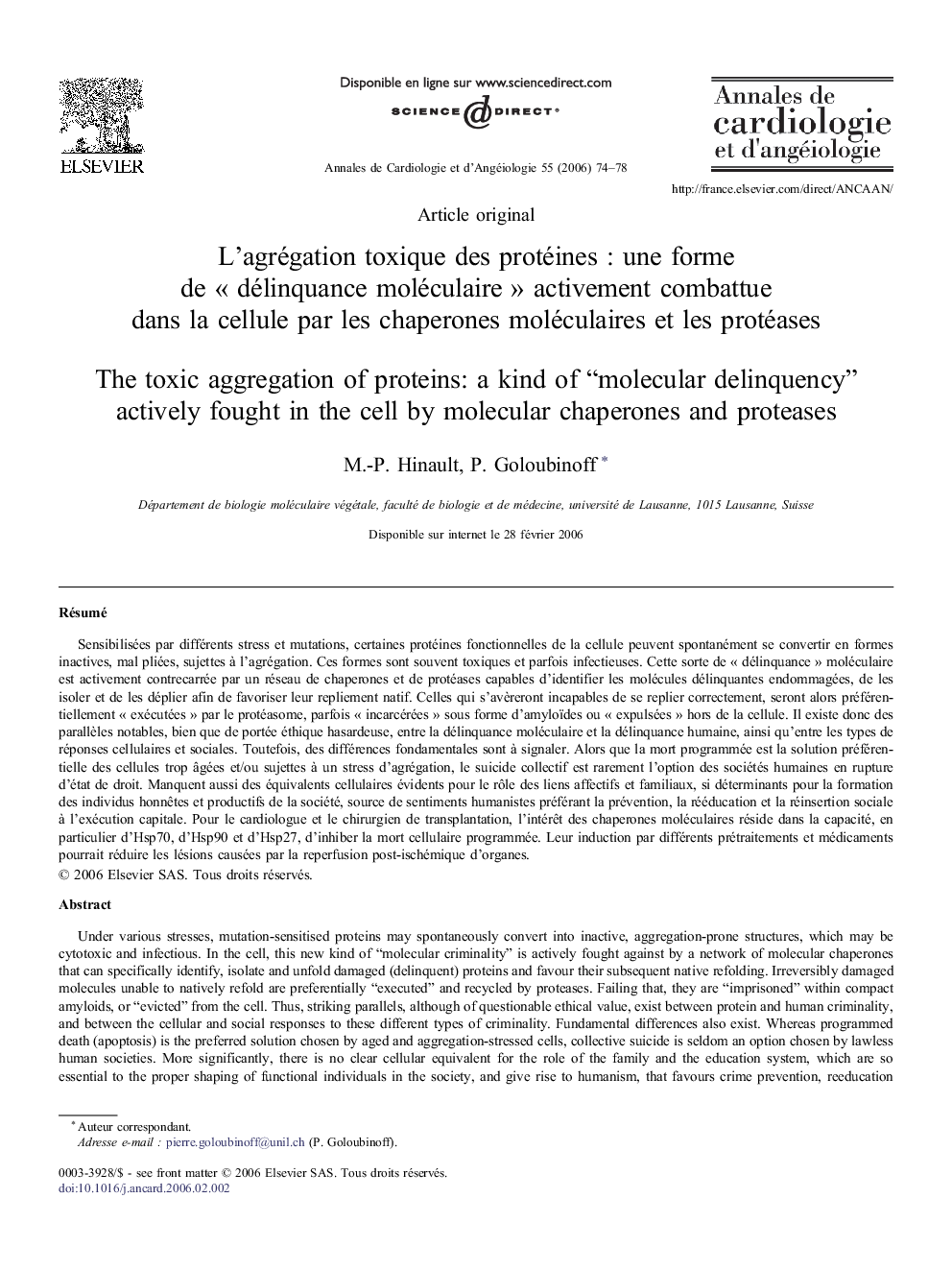| کد مقاله | کد نشریه | سال انتشار | مقاله انگلیسی | نسخه تمام متن |
|---|---|---|---|---|
| 2869612 | 1171261 | 2006 | 5 صفحه PDF | دانلود رایگان |
عنوان انگلیسی مقاله ISI
L'agrégation toxique des protéines : une forme de « délinquance moléculaire » activement combattue dans la cellule par les chaperones moléculaires et les protéases
دانلود مقاله + سفارش ترجمه
دانلود مقاله ISI انگلیسی
رایگان برای ایرانیان
کلمات کلیدی
موضوعات مرتبط
علوم پزشکی و سلامت
پزشکی و دندانپزشکی
کاردیولوژی و پزشکی قلب و عروق
پیش نمایش صفحه اول مقاله

چکیده انگلیسی
Under various stresses, mutation-sensitised proteins may spontaneously convert into inactive, aggregation-prone structures, which may be cytotoxic and infectious. In the cell, this new kind of “molecular criminality” is actively fought against by a network of molecular chaperones that can specifically identify, isolate and unfold damaged (delinquent) proteins and favour their subsequent native refolding. Irreversibly damaged molecules unable to natively refold are preferentially “executed” and recycled by proteases. Failing that, they are “imprisoned” within compact amyloids, or “evicted” from the cell. Thus, striking parallels, although of questionable ethical value, exist between protein and human criminality, and between the cellular and social responses to these different types of criminality. Fundamental differences also exist. Whereas programmed death (apoptosis) is the preferred solution chosen by aged and aggregation-stressed cells, collective suicide is seldom an option chosen by lawless human societies. More significantly, there is no clear cellular equivalent for the role of the family and the education system, which are so essential to the proper shaping of functional individuals in the society, and give rise to humanism, that favours crime prevention, reeducation and reinsertion programs over capital punishment. To the cardiologist and transplantation surgeon, the interest of molecular chaperones, in particular of Hsp70, Hsp90 and Hsp27, lays in their ability to inhibit the signalling pathway of programmed cell death. Their induction before and during ischemia, by various treatments and drugs could significantly reduce damages from the post ischemic reperfusion of organs.
ناشر
Database: Elsevier - ScienceDirect (ساینس دایرکت)
Journal: Annales de Cardiologie et d'Angéiologie - Volume 55, Issue 2, April 2006, Pages 74-78
Journal: Annales de Cardiologie et d'Angéiologie - Volume 55, Issue 2, April 2006, Pages 74-78
نویسندگان
M.-P. Hinault, P. Goloubinoff,